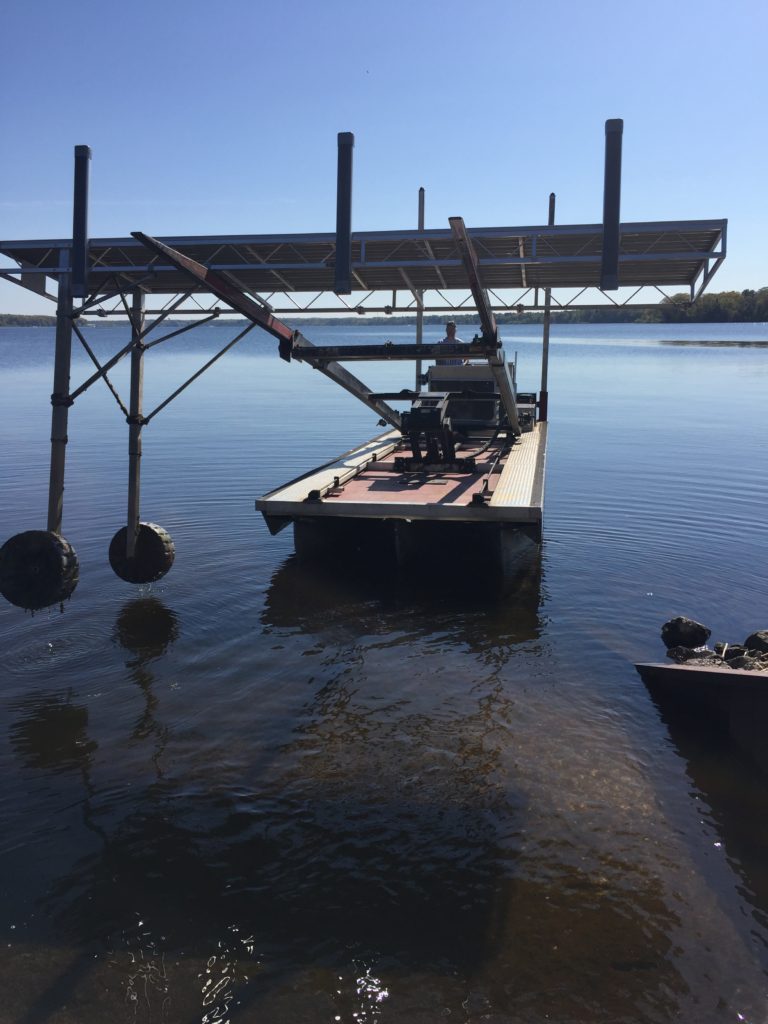Seasonal Preparations: When to Schedule Your Dock Repairs
Seasonal Preparations: When to Schedule Your Dock Repairs
Blog Article
Efficient Dock Repair Work Techniques: Ensuring Architectural Honesty
Making sure the structural integrity of docks via efficient fixing techniques is paramount for the longevity and safety and security of marine centers. Consequently, selecting the ideal repair work products, such as composite products and corrosion-resistant alloys, is crucial for sturdiness.
Assessing Dock Damages
Examining dock damage is a crucial initial step in ensuring the architectural integrity and safety and security of any docking center. This first assessment involves a thorough examination to recognize both visible and surprise problems. Key elements to check out include the dock's structure, pilings, outdoor decking, and equipment. Each part must be inspected for indicators of wear, rot, deterioration, or various other forms of degradation that can compromise the architectural honesty.
Structural designers or qualified inspectors generally carry out these evaluations using specialized techniques and tools. For instance, undersea assessments could use sonar devices or from another location ran automobiles (ROVs) to spot submerged damage. Above water, visual evaluations are matched by utilizing moisture meters and other diagnostic tools to discover underlying concerns not immediately noticeable to the nude eye.

Picking Fixing Products
Selecting the proper fixing products is a crucial step in the dock remediation procedure, one that directly influences the longevity and efficiency of the repaired framework. Material selection must be driven by elements such as environmental conditions, load-bearing demands, and compatibility with existing dock components.
In addition to timber, composite products are progressively prominent because of their sturdiness and low upkeep demands. Compounds, typically made from a mix of plastic and wood fibers, supply excellent resistance to rot, pests, and UV damages. For steel anchors, choosing corrosion-resistant alloys such as galvanized steel or marine-grade aluminum is necessary to stop rust and make certain architectural honesty in saline water conditions.
Epoxy resins and marine-grade sealers are vital for repairing cracks and sealing joints, giving a waterproof obstacle and enhancing the dock's general toughness. By carefully selecting top notch materials, dock fixings can achieve lasting outcomes, therefore guarding versus future destruction and guaranteeing safe, dependable usage.
Architectural Support Methods
Reliable structural support strategies are vital in making sure the security and long life of dock repair work. One fundamental approach involves making use of steel or composite support bars (rebar) within concrete frameworks. Rebar supplies extra tensile toughness, avoiding splits and distributing tons extra equally. This approach is specifically reliable for anchors subjected to heavy loads or extreme environmental problems.
One more vital technique is the application of fiber-reinforced polymers (FRP) These products provide high strength-to-weight ratios and exceptional resistance to rust, making them suitable for enhancing concrete or wood anchors. FRP can be applied in sheets or strips and adhered with epoxy resins to enhance structural honesty.
Bracing and securing systems additionally play a critical function in architectural support. Cross-bracing, using metal or wooden light beams, can neutralize side pressures, minimizing persuading and activity. Anchoring systems, such as helical piers or driven heaps, offer a secure foundation by moving tons to deeper, much more stable soil layers.
Last but not least, the assimilation of load-distribution plates can assist distribute weight much more uniformly throughout the dock's surface area, alleviating localized stress and anxiety points. These strategies collectively make certain that see page anchors continue to be safe and durable, efficient in enduring the roughness of their operational environment.
Advanced Repair Methods

Another advanced strategy entails underwater welding, which enables repair work to be carried out without the requirement to dewater the location. This approach is particularly advantageous for resolving architectural issues in submerged dock elements, making certain marginal disturbance to operations. Improved welding techniques, coupled with robotic systems, deliver accuracy and reliability, therefore expanding the life expectancy of the dock.
In addition, cathodic security systems are applied to stop deterioration in metal dock structures. By utilizing sacrificial anodes or impressed existing systems, these methods effectively mitigate the electrochemical procedures that lead to product degeneration.
Last but not least, advanced tracking modern technologies, such as architectural health and wellness surveillance (SHM) systems, supply real-time data on the problem of dock structures. These systems allow proactive upkeep and timely interventions, inevitably making certain the long-term architectural stability of the dock.
Maintenance and Prevention
Maintenance and avoidance are basic concepts that underpin the durability and safety of dock structures. Normal inspections are critical, enabling for early discovery of wear and tear, prospective weak points, and ecological impacts. A positive method, including regular look for deterioration, rot, and structural More Bonuses shifts, alleviates expensive fixings and lengthens the dock's operational life.
Precautionary procedures need to consist of using protective finishes to metal components to defend against rust and utilizing cured wood to withstand degeneration. Furthermore, making certain correct drainage and air flow can prevent water accumulation, which is an usual reason for structural degradation. Incorporating top quality materials and adhering to manufacturer guidelines throughout building and repair phases likewise play essential roles in enhancing longevity.

Training personnel in dock upkeep ideal techniques ensures constant application of safety nets. Leveraging technical developments, such as drones for assessments and sensors for real-time tracking, can additionally improve upkeep efforts. By focusing on upkeep and avoidance, dock proprietors can make sure architectural honesty, operational security, and economical monitoring over the dock's lifespan.
Final Thought
In conclusion, preserving the structural integrity of marine facilities demands thorough dock repair work methods. Extensive assessments utilizing advanced tools uncover both visible and hid damages, while the choice of ideal repair work products improves resilience. Carrying out architectural reinforcement approaches addresses anxiety factors successfully. Advanced repair work strategies, paired with normal maintenance practices, ensure the dock stays risk-free and operational under diverse environmental conditions. Taking on these strategies significantly lengthens the life expectancy and functionality of aquatic facilities. click to investigate
Ensuring the architectural honesty of anchors via reliable repair techniques is paramount for the long life and security of marine centers.Choosing the ideal fixing materials is a critical step in the dock remediation procedure, one that directly affects the longevity and efficiency of the fixed structure.Effective architectural reinforcement methods are crucial in making sure the stability and durability of dock repair services. By prioritizing maintenance and prevention, dock proprietors can ensure architectural stability, functional security, and economical monitoring over the dock's life expectancy.
In conclusion, preserving the architectural honesty of marine facilities demands thorough dock repair work techniques.
Report this page